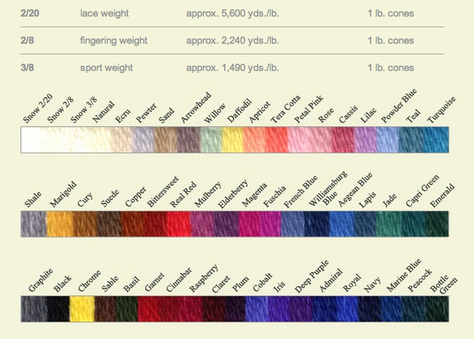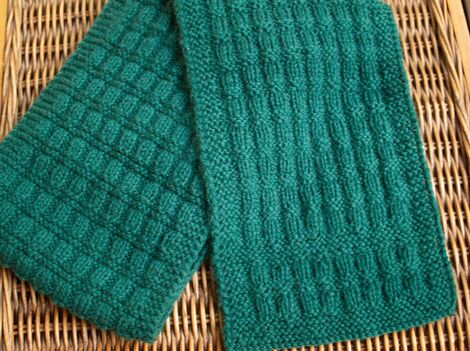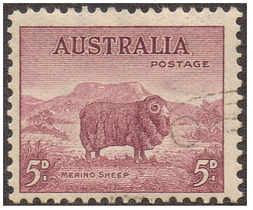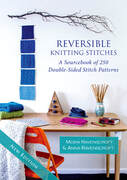They say that no learning is ever wasted, and that really proved to be the case for me with machine knitting. I had two knitting machines some years ago, one for standard-gauge and one for chunky. The chunky one would work up every yarn that I was using for hand knitting – even a Lopi sweater that had stalled in my hand-knitting basket was completed on this machine.
However, it was the standard-gauge knitting machine that was really an eye opener, with its punch-card patterning, the ease of shaping a garment from a hand-drawn outline and the wonderful range of additional yarn options using coned yarn.
I had never really appreciated coned yarns before, thinking that they were purely for machine use or weaving. However, when you use them doubled or even trebled then they can easily be used for hand knitting too.
This was worked from a cone of Jaggerspun "Maine Line 2/8" yarn which is a wonderfully soft 100% merino wool yarn. I was actually spoilt for choice for colours in this range as you can see from the shade card at the top of this post. In the end I settled on this one, Emerald, which is wonderful deep forest green shade.
I pre-washed the yarn in my usual way (and please click here for more info on that), and then wound the yarn into two balls. Holding the two yarn ends together gave a super-toasty result. The separate strands trap air between them, making a light-weight but cozy combination. And that is not the only benefit of using coned yarns: they are often spun a little tighter too, which reduces pilling and makes the final fabric stronger.
Jaggerspun also make a few other varieties of yarn, including a "Superfine Merino" that would be fabulous for this scarf, and they have a list of distributors on their website. In the UK, Uppingham Yarn have whole rooms of coned yarns, including a wonderfully soft lambswool yarn spun by Z Hinchliffe in Denby Dale, West Yorkshire.
And here are some sheepy facts relating to the Merino sheep:
- Dwayne Black from Australia went into the record books in 2007 by shearing a merino lamb in 53.88 seconds!
- Merino wool generally measures less than 24 microns in diameter, but Ultrafine merino can be as fine as just 10 microns.
- Spanish breeders developed the Merino breed in the 13th and 14th centuries, and even up to the 18th century exporting any animals from this breed was punishable by death.
Try using two strands of merino yarn held together the next time you fancy knitting something special, and enjoy the extra yarn options that that opens up!
If you would like more details of the Elizabeth Scarf pattern, then please click here. Next time, I will be looking at another sheep breed, and this time it will be the fabulously soft Blue-Faced Leicester.
Until then – Happy Knitting!
Moira
| Previous Blogpost: It's Wovember! Next Up: To infinity and beyond Our book: Reversible Knitting Stitches My Website: www.wyndlestrawdesigns.com |
merino wool, wool, yarn, coned yarn, using two ends of yarn held together, scarf, scarves,zR-231114






